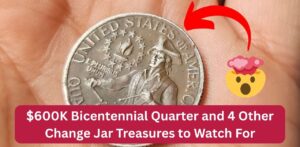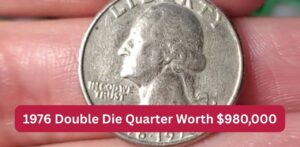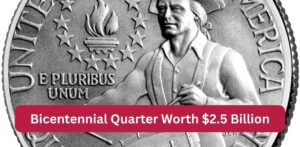What started as an ordinary grocery store transaction turned into an unexpected payday when a seemingly regular 1935 $1 Silver Certificate was found in pocket change. The note, which once passed hands for a single dollar, was later identified as a rare variant — now valued at an incredible $390,000.
An Ordinary Dollar Bill With an Extraordinary Value
The note surfaced at a local Ohio gas station and was given as change during a routine purchase. Its vintage look and unusual feel later caught the attention of the person who received it. After researching and consulting experts, the owner discovered they were holding a valuable piece of U.S. currency history.
This rare 1935 silver certificate is now making headlines and sparking renewed interest in collectible U.S. paper money.
What Makes This 1935 $1 Silver Certificate So Valuable?
Not all 1935 $1 bills are created equal. While many were printed, certain variants—like this one—are exceptionally rare. This particular note was identified as a “No Motto” version, meaning it does not include the phrase “In God We Trust” on the back. That phrase was added in later printings, making the earlier version highly collectible.
Key Features That Boosted Its Value
- “No Motto” back design
- A rare star note indicated by a star symbol before the serial number
- A low serial number within the first few thousand notes printed
- A condition rated near uncirculated by professional graders
The combination of rarity, pristine preservation, and printing uniqueness turned this once-overlooked bill into a high-value collectible.
How It Was Discovered — A True Collector’s Dream
The individual who found the bill was simply paying for groceries and received the note among several others. It sat unnoticed for a few days until its texture and design stood out. Curious, the finder did some online research and stumbled across forums discussing rare U.S. silver certificates.
That curiosity led to a professional appraisal. Experts quickly confirmed that this wasn’t just another 1935 bill — it was an incredibly rare collector’s item worth hundreds of thousands of dollars.
What Are Silver Certificates and Why Do They Matter?
Silver certificates were a form of U.S. paper currency issued between 1878 and 1964. These notes were once redeemable for their face value in silver held by the U.S. Treasury. Although they can no longer be exchanged for silver, they remain legal tender and highly collectible for their historical significance.
The 1935 and 1957 series are the most common among collectors. However, notes with rare errors, unusual markings, or special serial numbers are much more valuable.
Rare Variants to Watch For
- No Motto version (missing “In God We Trust”)
- Star notes with a star before the serial number
- Low serial numbers (e.g., 00000001–00000999)
- Ink or alignment errors
- Notes in crisp, uncirculated condition
Could You Be Holding a Rare Bill Right Now?
Most 1935 silver certificates sell for modest amounts—typically between $1.50 and $15, depending on wear and condition. But rare variants like this one can fetch six-figure sums or more, especially when authenticated and graded by professional services.
Experts recommend taking a second look at any old bills you have lying around. That crumpled dollar in your wallet or drawer might be far more valuable than you think.
Final Thoughts: Hidden Treasures Still Exist
This incredible $390,000 discovery is a reminder that valuable collectibles are still out there, often hiding in plain sight. In an era of digital money, these physical pieces of history continue to hold surprising value.
So the next time you receive change or clean out an old wallet, look closely. You just might be holding a small slice of American history — and a potentially life-changing treasure.
FAQs
Are 1935 silver certificates still legal tender?
Yes, they are still legal tender and can be used as $1 bills. However, collectors may pay significantly more for rare versions.
How can I tell if my 1935 $1 bill is rare?
Check if it’s a “No Motto” version, has a star before the serial number, features low serial numbers, or shows signs of printing errors. Its physical condition also plays a major role in value.
Where can I get my bill appraised?
You can visit a certified numismatist or submit your bill to trusted grading services like PCGS or PMG for authentication and valuation.
Are silver certificates from 1935 common?
Yes, they were printed in large quantities. However, rare variants and notes in excellent condition are extremely valuable to collectors.



